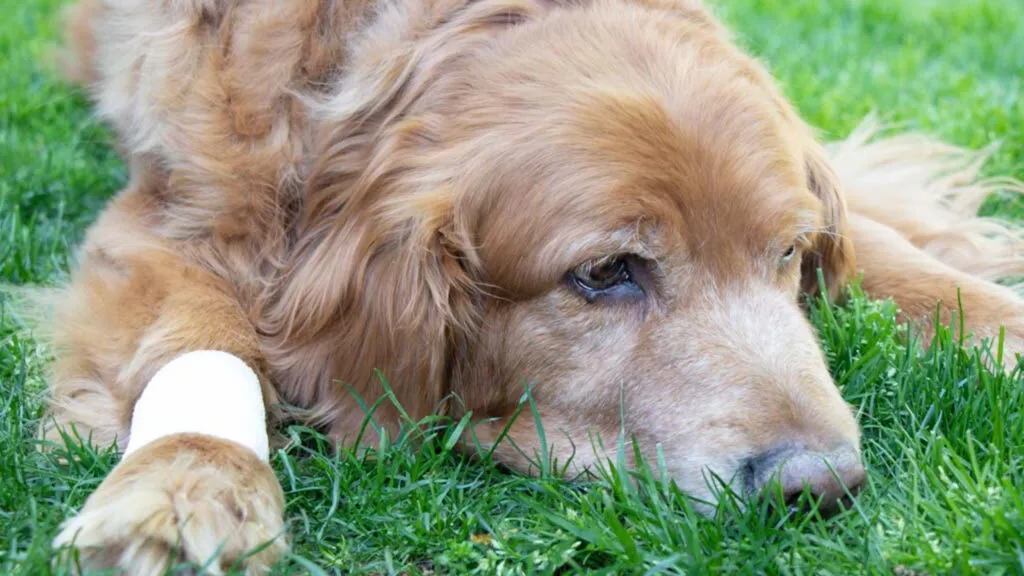Recently my three-year-old golden retriever, Petey, was licking his paw. He ran around and seemed fine otherwise, so I didn’t think much of it. But after I noticed him licking again and again, I took a closer look. It turned out he had a badly broken toenail that required veterinary attention.
Some signs of pain in our pets are obvious: whimpering, crying and limping, for example. But other signs are subtle and may be missed. September is Animal Pain Awareness Month, so it’s a good time to review ways to tell if your dog, cat or other pet may need help.
Dogs
- Licking a paw or any part of the body
- Shaking head or lowering head
- Scratching ears
- Panting
- Pacing and/or restlessness
- Refusing to get up
- Tucking the tummy
- Shaking, twitching or trembling
- Growling and/or snapping
- Not wanting to be touched
- Excessive barking
- Whining and/or crying
- Loss of appetite
Cats
- Crying
- Growling and/or hissing
- Excessive grooming
- Trembling
- Difficulty jumping
- Change in behavior (less active, less friendly, rubbing against people less)
- Aggressiveness
- Change in litter box habits
- Change in appetite
- Blinking or squinting
- Tail flicking
- Hiding
Small Pets
- Hunched posture
- Decreased activity
- Excessive scratching
- Lack of appetite
- Aggressiveness
- Rats: The appearance of reddish stains around nose and eyes (“red tears”)
- Guinea Pigs: Puffed-up coat or hair loss, abnormal breathing (labored or wheezing), dull or sunken eyes
- Ferrets and Rabbits: Crying with a high-pitched scream
- Rabbits: Hiding or becoming completely immobile
Birds
- Favoring one leg or avoiding using a wing
- Squinting
- Lethargy
- Seeming depressed
- Aggressiveness
- Irritability
- Loss of appetite
- Puffed up feathers
- Tail bobbing with each breath
- Prolonged molt
- Not perching or sitting on bottom of cage
If you notice any of these signs, consult your veterinarian. Your vet knows your pet and its specific medical history and can help guide you toward the best solution.
A symptom may be caused by one of many possible ailments. For instance, a pet licking a paw may have a wound, a hot spot, an insect or tick bite, or other injury. Or it may have pain caused by a less visible problem, such as arthritis. It’s also possible that your pet is licking as the result of stress, boredom or an emotional issue.
One of the more common signs that something is wrong is a lack of appetite, especially in a pet that normally loves to eat. One time, my senior dog Brooks seemed a bit under the weather, but we hadn’t found any obvious problem. When he wouldn’t even look at his favorite dog biscuit, however, I called the vet. It turned out that he had an intestinal blockage and needed immediate surgery. Other problems like dental disease, infections and cancer may require urgent attention, so it’s important to speak up about any abnormal behavior that you notice.
Remember, these are only some of the signs that your pet may be in pain, and every pet is different. When in doubt, seek medical attention from your veterinarian. Our pets count on us to keep them healthy and happy, and we sure don’t want to let them down.
Did you enjoy this story? Subscribe to All Creatures magazine.





